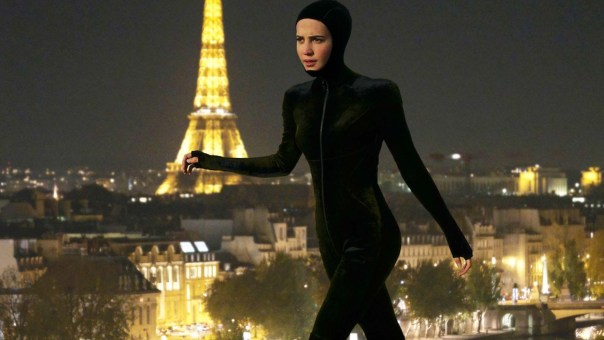Just finished bingeing on Irma Vep which I started watching yesterday and loved. I was thinking what a great course it would make, using the original Feuillade and the nineties Assayas films as anchors but dealing with different topics the series brings up through other films about cinema in its broadest sense. Keaton’s Sherlock Holmes Jr, Hellzappopin, Minnelli’s The Bad and the Beautiful and Two Weeks in Another Town, Fellini’s 81/2, The Day of the Locusts, The Player etc.
I liked how the series brings up and has a view on almost every topic related to filmmaking: the beauty of a travelling shot; the carelessness of the production in relation to safety; stars and actors; the importance of costuming; the changing technology; blockbuster cinema; the scleroticism of current art cinema; the possibilities of micro-cinema; cinema as product for systems, in this case global luxury goods advertising; objectification and the #metoo movement; consideration of effects, affect and value on how and where one sees the work (some derisory comments on You Tube); the centrality of desire at every level and at every stage of the work; the role of fantasy and light. I liked the structure of the piece with the inter-cutting of Feuillade’s series, re-enactment of the making of the original Irma Vep, and the filming of the current series; and then interspersing all of that that with dramatic re-enactments of Musidora’s memoirs.
I also adored the actors, Vikander of course, but also Vincent Lacoste as the vain leading man and particularly Vincent Macaigne as the director – clearly based on some level on Assayas – but a director unlike we’re used to seeing represented: insecure, impotent, still obsessed by adolescent sexual fantasies — in this case originating, as with so many of his generation, with Diana Rigg’s Emma Peel in The Avengers –– depressed and scared etc. Lars Eidinger, Tom Sturridge, Fala Chen and so many of the others also impressed and it was great to see Kristen Stewart appear at the end.
I liked the melodrama of the sexual infatuations, the fluidity of the representations and the matter-of-fact way they were presented. The series brings all these issues up and though one isn’t always in agreement – What is all this spirit stuff?- I welcomed the way it encourages us to think through the current mediascape historically, from a personal perspective. I have to think about it some more but I loved the experience of seeing it, both as metacinema and as a work in itself, and recommend if you haven’t already seen it; though I’m probably late to the party as usual.
José Arroyo

